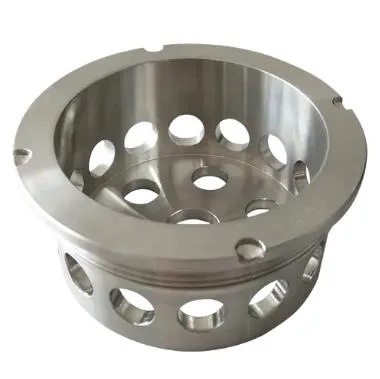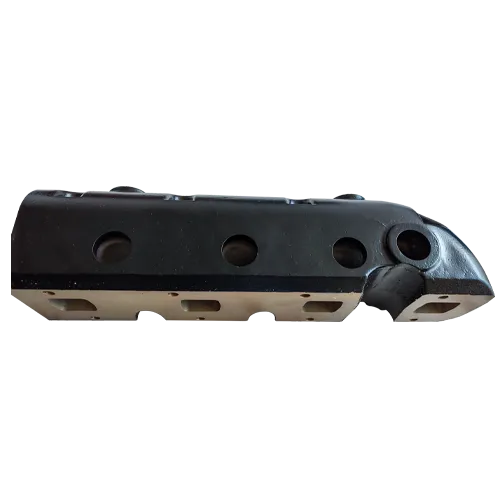Mobile:+86-311-808-126-83
Email:info@ydcastings.com
Design Considerations for Casting Optimize Sand & Die Casting Solutions
- Understanding Foundational Design Principles
- Material Compatibility and Process Selection
- Technical Advantages of Sand Mold Casting
- Manufacturer Comparison: Sand vs. Die Casting
- Custom Solutions for Complex Geometries
- Industry Applications and Performance Metrics
- Strategic Implementation of Casting Design

(design considerations for casting)
Understanding Foundational Design Principles for Casting
Effective casting design begins with analyzing functional requirements and production constraints. Engineers must balance wall thickness (typically 3-25mm), draft angles (1-3°), and fillet radii (≥2mm) to prevent defects like cold shuts or porosity. For sand casting, the 85-92% silica composition in molding sand directly impacts surface finish quality, while die casting demands precise temperature control between 300-500°C for aluminum alloys.
Material Compatibility and Process Selection
Metal fluidity varies significantly across alloys – aluminum flows 40% farther than steel at equivalent temperatures. This physical property dictates process suitability:
- Sand casting accommodates 50+ metal types, including nickel superalloys
- Die casting achieves ±0.25mm tolerances for zinc/aluminum
- Investment casting maintains <0.5% porosity rates for aerospace components
Technical Advantages of Sand Mold Casting
Modern sand casting systems achieve dimensional accuracy within IT13-15 grades, supporting weights from 100g to 300t. The process demonstrates particular strengths in:
| Parameter | Sand Casting | Die Casting |
|---|---|---|
| Tooling Cost | $5,000-$20,000 | $50,000-$200,000 |
| Lead Time | 2-4 weeks | 8-12 weeks |
| Surface Roughness | Ra 12.5-25μm | Ra 0.8-3.2μm |
Manufacturer Comparison: Sand vs. Die Casting
Leading foundries demonstrate distinct capabilities:
| Vendor | Specialization | Cycle Time | Minimum Order |
|---|---|---|---|
| Bühler Group | High-pressure die casting | 30-90 seconds | 10,000 units |
| Nemak | Sand cast engine blocks | 24-48 hours | 500 units |
| Alcoa | Custom aluminum solutions | Varies by geometry | Prototyping available |
Custom Solutions for Complex Geometries
Advanced simulation software reduces prototyping iterations by 60-75%. For a recent turbine housing project, 3D-printed sand cores enabled internal channels with 0.8mm wall thickness – previously unachievable through conventional methods. Post-casting CNC machining maintained ±0.05mm bore accuracy across 200 components.
Industry Applications and Performance Metrics
Automotive brake calipers produced via sand casting withstand 150MPa pressure with 0.02% leakage rates. Compared to die-cast alternatives:
- 30% higher fatigue resistance
- 15% weight reduction potential
- 45% lower tooling investment
Strategic Implementation of Casting Design Considerations
Optimizing casting processes requires evaluating annual volumes against tooling amortization. For production runs under 5,000 units, sand casting provides 18-22% cost advantage over die casting. Implementing concurrent engineering practices reduces time-to-market by 40%, particularly when integrating simulation data early in the design phase.

(design considerations for casting)
FAQS on design considerations for casting
Q: What are the key design considerations for sand mold casting?
A: Key considerations include ensuring proper draft angles for easy mold removal, maintaining uniform wall thickness to prevent defects like warping, and designing gates/runners for smooth molten metal flow. Sand properties and pattern design also impact final product quality.
Q: How does material choice affect design in casting processes?
A: Material fluidity influences minimum wall thickness and intricate detail feasibility. Thermal shrinkage rates dictate allowance requirements, while strength characteristics determine load-bearing section designs. Compatibility with mold materials (e.g., sand vs. metal dies) is also critical.
Q: What design factors differentiate sand casting from die casting?
A: Sand casting allows larger, more complex geometries with lower tooling costs but requires draft angles and thicker walls. Die casting enables tighter tolerances and thinner walls but demands higher upfront investment in hardened steel molds and suits high-volume production.
Q: Why is draft angle crucial in sand casting design?
A: Draft angles prevent pattern damage during removal from sand molds and reduce erosion risks. Typically 1-3°, they minimize residual stress and improve surface finish. Steeper angles may be needed for deeper sections or intricate patterns.
Q: What are the main design challenges in die casting compared to sand casting?
A: Die casting designs must account for rapid cooling rates restricting metal flow in thin sections. High-pressure injection requires robust part geometries to withstand stresses, while complex internal features demand precise mold engineering. Limited draft angles (0.5-1°) increase precision requirements.
-
Why Should You Invest in Superior Pump Castings for Your Equipment?NewsJun.09,2025
-
Unlock Performance Potential with Stainless Impellers and Aluminum End CapsNewsJun.09,2025
-
Revolutionize Your Machinery with Superior Cast Iron and Aluminum ComponentsNewsJun.09,2025
-
Revolutionize Fluid Dynamics with Premium Pump ComponentsNewsJun.09,2025
-
Optimizing Industrial Systems with Essential Valve ComponentsNewsJun.09,2025
-
Elevate Grid Efficiency with High-Precision Power CastingsNewsJun.09,2025











